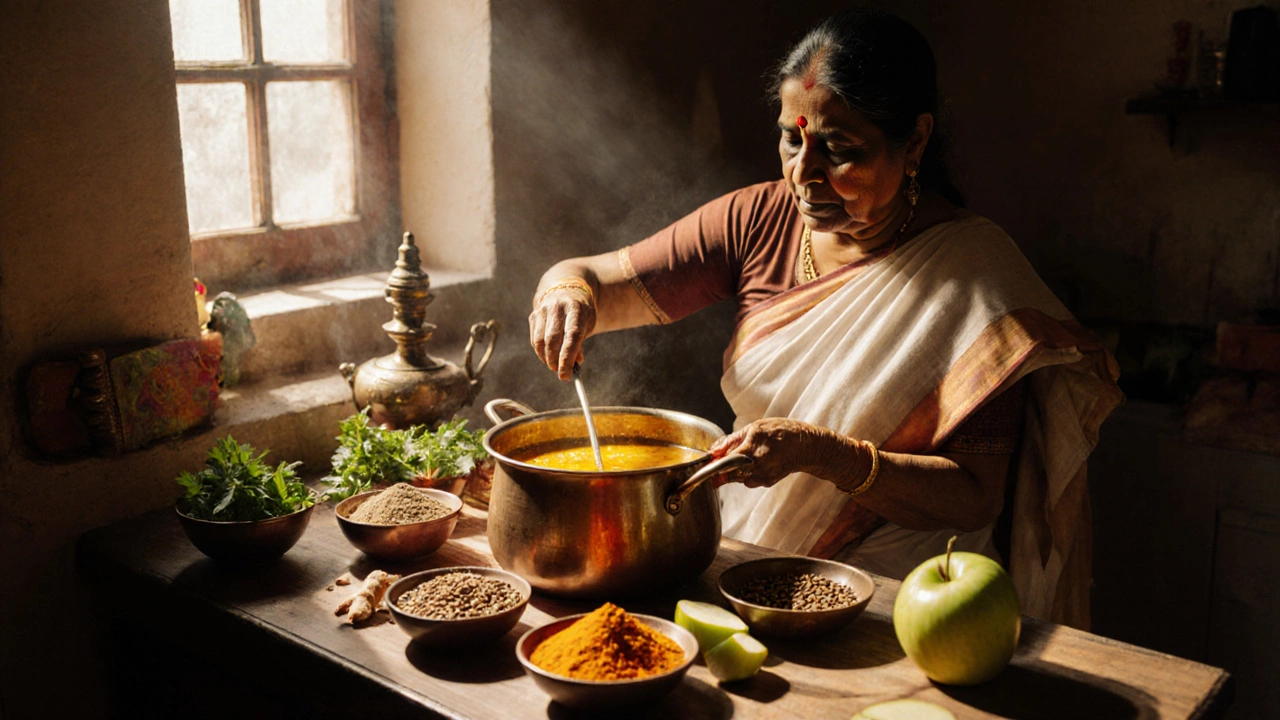Explore how Ayurveda tackles weight loss, the role of doshas, diet, herbs, and lifestyle tweaks, plus evidence and practical tips for real results.
Read MoreDosha Balancing Made Simple: Everyday Tips for a Healthier You
Ever wonder why you feel off after a heavy meal or a sleepless night? In Ayurveda, those ups and downs usually point to an out‑of‑balance dosha. Whether you’re mostly Vata, Pitta, or Kapha, a few practical tweaks can bring your system back into harmony without complicated rituals.
How to Identify Your Dominant Dosha
Start by noticing your body’s default patterns. Vata types feel cold, get anxious, and love light, airy foods. Pitta folks tend to run hot, get irritable, and crave cooling flavors. Kapha people are steady, gain weight easily, and thrive on warming, energizing activities. A quick online quiz can confirm what you feel, but these simple clues are often enough.
Once you know your primary dosha, you can target the foods and habits that calm it. The key is not to eradicate the dosha—just keep it from dominating.
Everyday Habits for Balanced Doshas
1. Eat the right foods. If you’re Vata, choose warm, cooked meals like stews and oatmeal; avoid raw salads that make you feel shaky. Pitta benefits from cool, sweet foods like cucumber salad, coconut water, and dairy; skip overly spicy snacks. Kapha thrives on light, pungent flavors—think ginger tea, leafy greens, and less dairy. Our post on Ayurveda Inflammatory Foods gives dosha‑specific swap ideas you can follow today.
2. Time your meals. Ayurveda says the strongest digestion happens around 12 pm. Try to have your largest meal then, a light snack around 3 pm, and a modest dinner before 8 pm. This schedule keeps fire (Agni) steady for all doshas.
3. Move according to your type. Vata needs gentle, grounding exercise—yoga, walking, or light strength training. Pitta does well with moderate cardio that lets off steam, like swimming or cycling. Kapha benefits from vigorous, sweaty workouts—dance, HIIT, or brisk hikes—to boost metabolism.
4. Sleep with the sun. Our Ayurvedic Sleep Cycles guide shows that Vata should be in bed by 10 pm, Pitta around 11 pm, and Kapha a bit later, around midnight. Aligning your bedtime with your dosha supports natural energy rhythms.
5. Use herbs wisely. Turmeric calms Pitta, ginger balances Vata, and cinnamon lifts Kapha. Start with a teaspoon in warm water each morning; watch how you feel over a week.
6. Manage stress. Vata gets wired, Pitta burns out, Kapha can become sluggish. Simple breathing exercises—three deep breaths when you feel tension—help all doshas reset.
Putting these steps together doesn’t require a full lifestyle overhaul. Pick one habit that feels doable—maybe swapping a raw snack for a cooked one if you’re Vata—and stick with it for a few days. Notice the change, then add another tip.
Balancing doshas is less about perfection and more about consistency. When you honor what your body naturally craves, pain and discomfort often fade, and energy flows more smoothly. For deeper dives, check out our articles on Vata personality traits and dosha‑friendly diets—they’re packed with real‑world examples you can try right now.
So, ready to give your doshas a gentle reset? Start small, listen closely, and watch how quickly everyday life feels lighter and more in tune.





